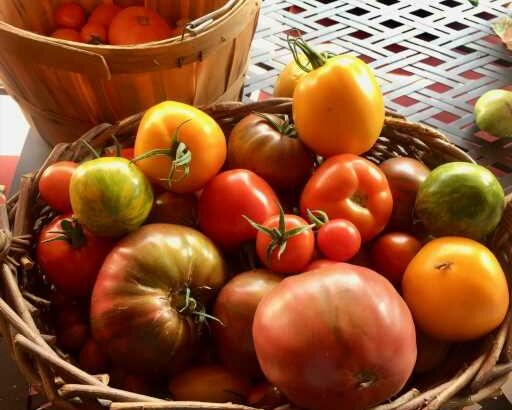Charlie Brown is the self-proclaimed “Tomato King” of Denver (and had T-shirts made up to prove it).
The former Denver city councilman has been gardening for 50 years and currently has 165 plants growing in his backyard garden that wraps around his ranch house near Observatory Park.
But “it’s not easy growing tomatoes in Colorado,” he said. After some hail and a lot of cool and cloudy weather in June, followed by consecutive 95-degree days, Brown said this has been “the worst season I’ve seen in a long time.” Brown has a produce stand outside his home every Saturday and usually sells around 1,000 pounds of tomatoes every summer. So far, he’s only been able to sell around 200 pounds.
Colorado’s tomato season has been delayed at least two weeks and in some places four due to the extreme weather this summer, according to Cassey Anderson, a horticultural specialist for Colorado State University Extension Adams County.
The sweet spot for tomato weather is around 75 to 80 degrees, but “we haven’t had much of that this summer,” Anderson said. The moisture from the rain in June kept the soil cool for longer, stunting the plants. The heat that followed immediately after impacted pollination and fruit maturation. “The plants get grumpy … Tomatoes are the princesses of the garden.”
Anderson just got her first real harvest of tomatoes last week. “I usually do it in July,” she said.
The hail didn’t help either. Colette Haskell, a horticulturist at Nick’s Garden Center in Aurora for the past 25 years, said her 11 tomato plants got hailed out twice. “They were stripped to little sticks, and I got some leaf damage the second time,” she said. “The poor plants had to start all over and make new leaves again by mid-June.”
But Haskell, who has been growing tomatoes for 30 years, is hopeful for the rest of the season. She said her plants are about 7 inches tall right now, even though most of the fruit is still green.
“We still have September and October, and there have even been years where I’m still pulling tomatoes off my plants in November,” she said.
Brown, meanwhile, planted 18 different varieties of tomatoes at the end of May, including seven types of cherry tomatoes, eight mid-size tomatoes and three kinds of beefsteaks. He starts from seeds in his basement before transferring them to his backyard garden (and sells those starter plants in the spring), but now his plants are about three weeks behind.
“The best indicator is America’s favorite heirloom tomato, the Red Brandywine, and I don’t have any,” Brown said. “They usually come in the last 10 days of August, but I don’t have a single one”
Colorado’s tomato season usually ends around the hard frost when temperatures dip down below 32 degrees for consecutive days. But with the state’s unpredictable weather, it could be as early as two weeks into September or, like Haskell said, up until November.
For backyard gardeners struggling to keep their tomatoes alive for the last couple of months, Anderson has some tips.
“Make sure your watering and fertilization is on point, and you’re not overwatering,” Anderson said. “Let the soil dry out in between irrigation, and fertilize only if you’re not seeing much growth on the plant. If you have lots of green leaves, stop fertilizing. And for those end-of-summer days with high heat, throw a shade cloth over your plants to protect them.”
Subscribe to our new food newsletter, Stuffed, to get Denver food and drink news sent straight to your inbox.
Source: Read Full Article

